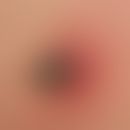Synonym(s)
DefinitionThis section has been translated automatically.
Alternatingly warm inhabitants of land and water, mainly living in warm and humid regions. Most diverse group of animals with bilateral, symmetrical, segmented bodies, limbs with joints, outer skeleton made of chitin, a real body shell and without closed blood vessel system. Some arthropods are parasites or disease carriers for humans (contact with the body surface).
General definitionThis section has been translated automatically.
Subdivision into the following sub-strains:
- Diantennata (crustaceans; Branchiata, Crustacea): Tripartite division of the body with thorax and abdomen. Water breathing with gills. Split feet and two pairs of antennae. Disease vectors (intermediate host) are for example crabs and bouncers.
- Chelicerata (Arachnoideae): Division of the body into cephalothorax and abdomen. Breathing apparatus with trachea and tracheal lungs. Four pairs of legs. Most poisonous bites or stings can be caused by some representatives of the orders:
- Antennata (Tracheata): Breathing through tracheas (tracheal animals). The most important parasite and disease vectors of the antennata are:
-
Insects (hexapods, 3 parts of the body, 3 pairs of legs on the thorax) in the orders:
- Anoplura (lice)
- Heteroptera (Bugs)
- Siphonaptera (fleas)
- Diptera (diptera; midges and flies)
- Hymenoptera (hymenoptera; bees, wasps, hornets, bumblebees, ants)
ClinicThis section has been translated automatically.
The clinical picture of skin or general reactions caused by infestation, bites or stings varies greatly (see below the respective clinical pictures) and depends on the individual readiness to react, a possibly previously acquired sensitization, the time of the event and secondary effects (e.g. scratching effects, infection).
- Insect bites caused by two-winged insects (mosquitoes, flies) are mainly found on the freely exposed parts of the body as itchy inflammatory papules with accentuated bites.
- Flea bites are more likely to be found on covered areas of the skin as grouped, acute (overnight), itchy wheals or papules with sometimes visible central puncture sites
- Bug bites are found on uncovered areas of skin as sometimes linear, itchy wheals or papules, with central puncture site often visible
- Tick bites: often go unnoticed (in Lyme disease about half of the patients cannot remember a tick bite). Later, non-itching ring-shaped centrifugally growing erythema can become conspicuous(erythema chronicum migrans in case of infection with Borrelia).
- Scabies (scabies mites) appears as a violently itching generalized, mostly eczema-like clinical picture. Axillae, interdigital spaces, genitals are frequently affected. Face and mucous membranes remain free
- Trombidia (autumn mites) cause in late summer or autumn, with appropriate exposure, on covered areas of the skin, passive (persist for about two weeks) itchy skin asps.
- Cheyletiellen (fur mites) are permanent ectoparasites in dogs, cats, rabbits, hares; host fur may appear mealy whitish. In exposed humans, cheyletia lead to passive (humans are false hosts) small papular itchy skin rashes, especially in the contact area (e.g. forearms, face).
Incoming links (6)
Anthropozoonosis; Arboviruses; Arthropod; Arthropod reaction; Larva migrans; Prurigo simplex acuta;Outgoing links (14)
Bugs; Cheyletiellosis; Cimicose; Erythema migrans; Fleabite; Insect bites (overview); Mites; Mosquitoes; Pediculosis (overview); Pulicosis; ... Show allDisclaimer
Please ask your physician for a reliable diagnosis. This website is only meant as a reference.



